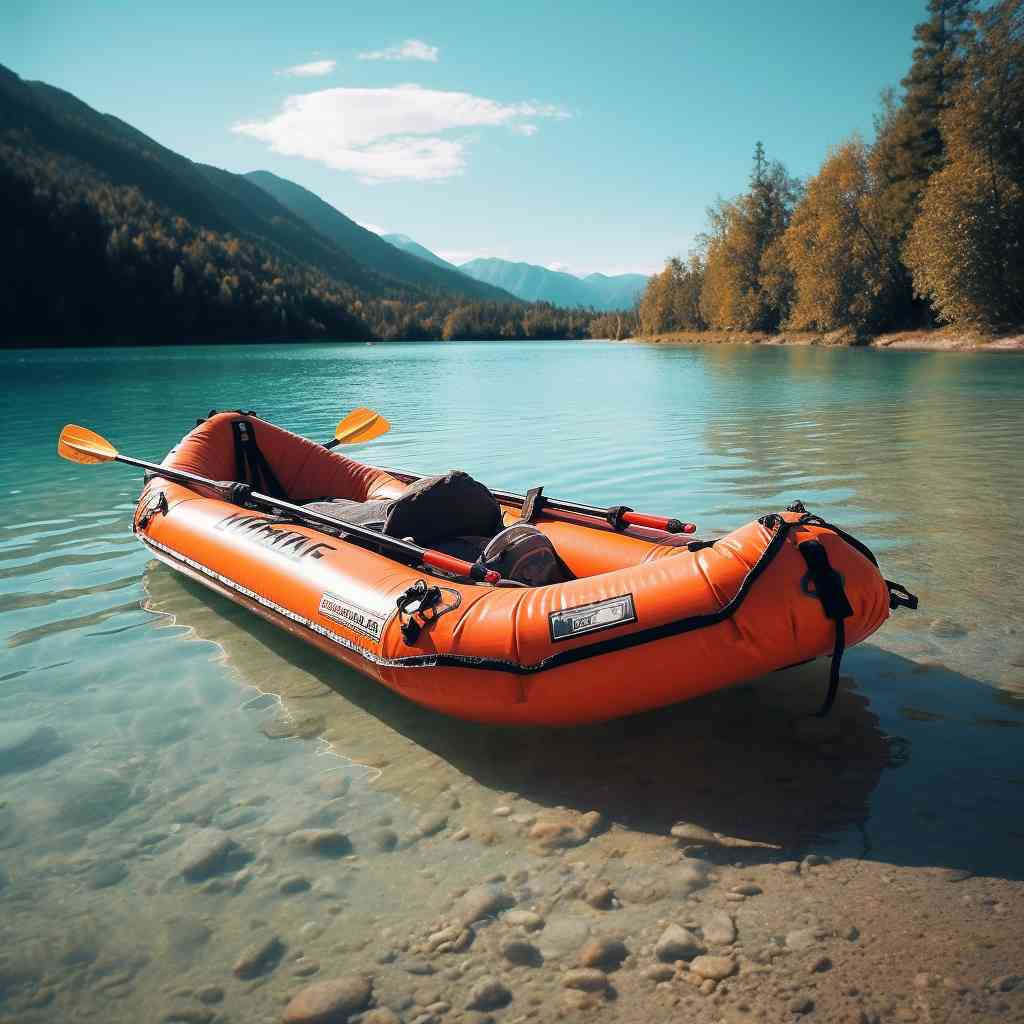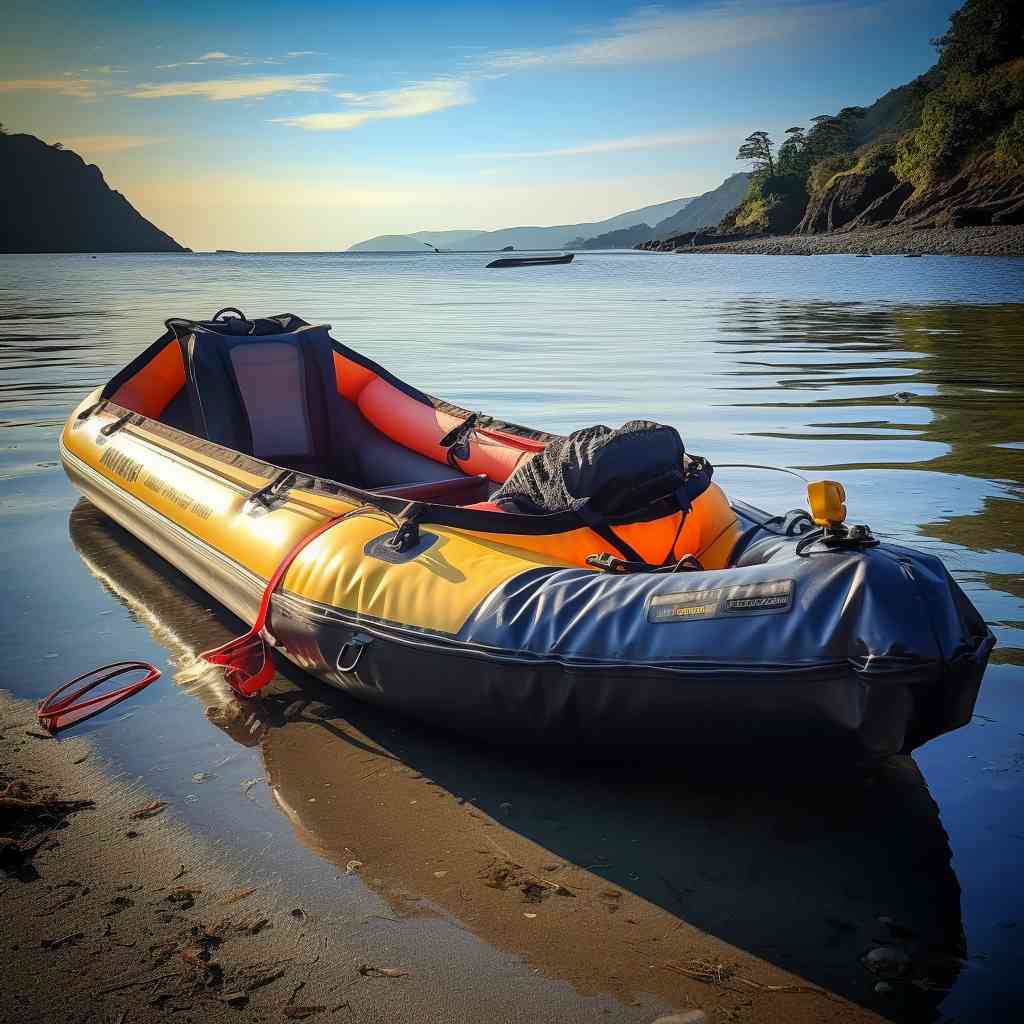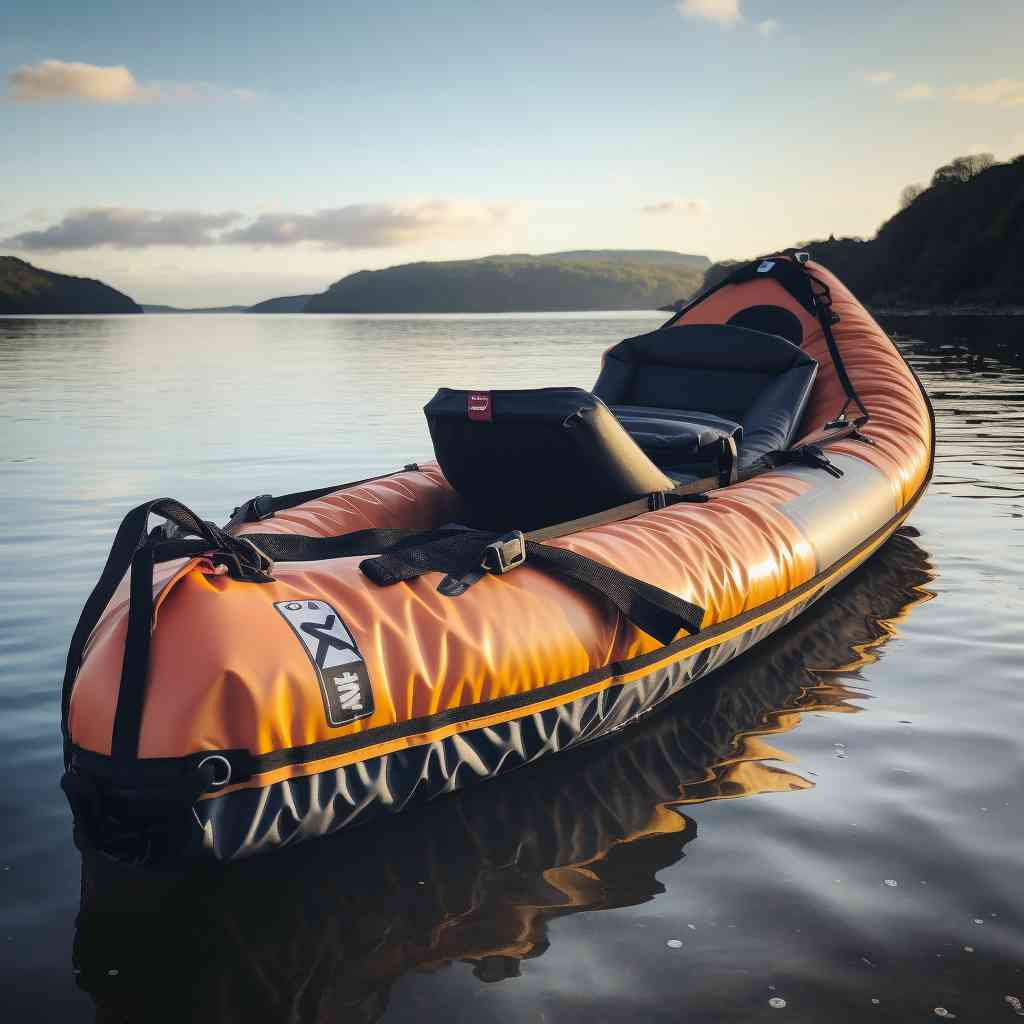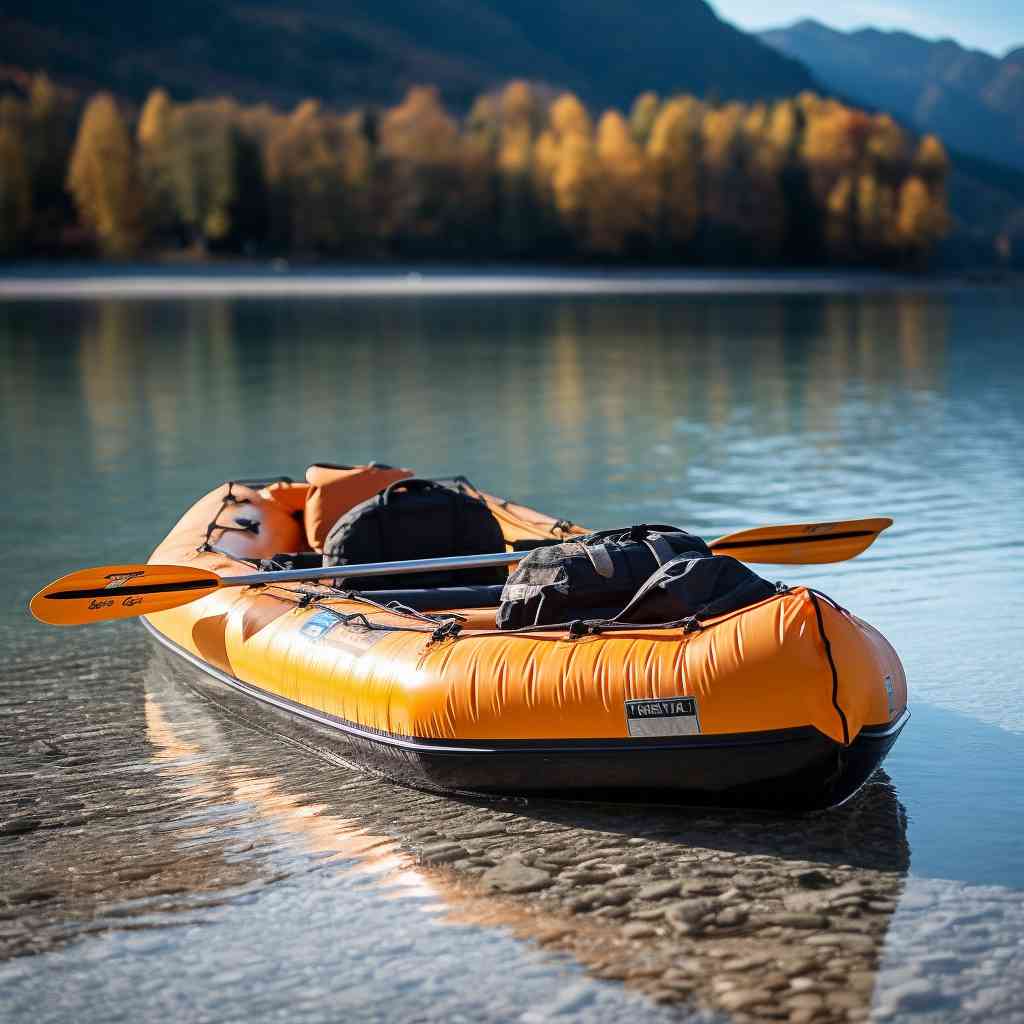Intro: How To Store Inflatable Kayak

Alright, my friends, let’s dive right into the ins and outs of properly storing your inflatable kayak. Now, for those of us who appreciate the ease and portability of an inflatable kayak, proper storage isn’t only recommended…it’s absolutely essential! You’d hate to see your beloved kayak’s lifespan drastically reduced due to poor storage, right? Boating blunders can really mess up a kayaking adventure, not to mention your pocket.
To keep your inflatable kayak in the best possible condition, it’s critical to clean it thoroughly prior to storing. Grit, grime, or salt residues left on the surface can gradually damage the material, causing it to degrade over time. Use a mild detergent solution and a soft brush, being careful not to scrub too hard, as you don’t want to inadvertently cause any harm to the surface. Rinse it out well and make sure it’s completely dry before moving on to the next step.
Now, it’s essential to deflate the kayak before storing it. Leaving it inflated, especially in areas with drastic temperature changes, can lead to overinflation and potential damage. When deflating, make sure you do it slowly – you don’t want to risk tearing or otherwise damaging the vessel.
Storing your inflatable kayak in the correct place is crucial as well. Avoid storing it in places with excessive moisture or direct sunlight. Such conditions can weaken the material over time, making it more prone to puncture and your kayak less reliable for those water escapades. A cool, dry place like your garage or a storage room in your house would be ideal for storing your deflated and cleaned kayak.
Lastly, consider storing it in a sturdy storage bag to prevent dust accumulation and to fend off sharp objects that might puncture it accidentally. After all, safety first, isn’t it?
Remember, an inflatable kayak is an investment, and it’s up to you to safeguard it. With proper care and right storage techniques, your kayak will provide years of fun, adventure, and exploration. Happy kayaking, everyone!
How Do I Store My Inflatable Kayak For Winter?

Well, winter is coming, and it’s time to think about where to put my beloved inflatable kayak. You see, storing it properly is key to ensure its lifespan. It’s not as daunting as it sounds, I assure you.
Alright, the first step is cleaning. Now, I’m sure you think, “Oh, the kayak can stay a bit dirty, can’t it?” But let me tell you, leaving it grimy can lead to mildew and irreversible damage, and that’s not what we want. So, give it a good clean with some mild soap and warm water before you put it away. And make sure it’s bone-dry before you move to the next step – storing a wet kayak will literally invite mold and mildew for a party!
The best place for an inflatable kayak over winter, you ask? Well, it’s not your garage or shed, if that’s what you’re thinking. Instead, find a dry, cool, and dark place indoors, preferably where the temperature doesn’t fluctuate much. Extreme cold or heat can damage the materials of our little boat.
Here comes the tricky part for some people – deflating it. I know, I know, it’s a pain, but it’s necessary. Deflating your kayak avoids unnecessary pressure on the seams, increasing its life. Also, it makes it much easier to store.
After deflating, fold it carefully, following the manufacturer’s instructions. You see, improper folding can lead to creases which could eventually turn into cracks.
Lastly, when you store it, don’t stack or put heavy things on it – the pressure could cause damage. And remember, peek in now and then to check for potential issues like pests or moisture build-up.
There you go. You’re now equipped with the knowledge to store your inflatable kayak for winter. It may seem like a hassle now, but trust me – come spring, you’ll be glad you did it right!
Is It Ok To Store A Kayak Standing Up?

Well, you may be asking, is it okay to store a kayak standing up? The long and short answer, my friend, is yes and no. You could, technically, store it upright. However, the challenge with standing an inflatable kayak lies in the stress it puts on certain parts of it, specifically the bottom. Over time, gravity’s relentless pull could lead to deformations and damage. You’d hate to see your beloved inflatable kayak twisted out of shape, wouldn’t you? Or worse still, spring a leak from undue pressure?
But here’s an enlightening fact! Standing your kayak is okay for short-term storage. We’re talking about a few hours or maybe a day. It’s manageable when you’ve just returned from an exhilarating day kayaking and need to let your kayak dry out before proper longer-term storage. But remember, this is more like a temporary arrangement and not a long-term solution.
For the longer term, think horizontal storage. This spreads the weight evenly across the body of the kayak, minimizing any chance of deformations. Alternatively, if you need to store it standing up due to space restrictions, ensure that it’s well-secured and upright to avoid any pressure points. And whatever you do, do not forget to deflate it properly before storage! It can significantly reduce stress on the seams and extend the life of your inflatable kayak.
So, in summary, standing up storage? Okay for short periods, but ensure horizontal storage for the long term. It’s all about keeping your inflatable kayak in shipshape for those future adventure-packed outings!
How To Store Inflatable Kayak Long Term
Alright, let’s dive right into the discussion about long term storage concerns for your inflatable kayak. There are numerous steps and precautions to keep in mind, so let’s get rolling!
- Deinflate Properly: It’s essential to deflate your inflatable kayak correctly before any long-term storage. Don’t rush this part – you want to carefully and fully let out every bit of air to minimise any potential strain on the material.
- Dry Fully: Moisture is not a friend of stored items, and inflatable kayaks are no exception. Be sure to thoroughly dry your kayak before storing it – from the inner sections out to the exterior. And remember, it’s often the smallest amount of unattended water that can cause the most damage!
- Pack Tightly: Once your kayak is deflated and dried, roll or fold it tightly. The aim here is to minimise the space it requires for storage and prevent any chance for dirt or debris to creep in.
- Storage Bag Use: Always use a proper storage bag for keeping your raft. It shields it from the elements and reduces the risk of punctures and scratches.
- Indoor Storage: If possible, store your kayak indoors. Outdoor elements can gradually damage your boat, and indoor storage provides better protection. A dry, temperature-controlled spot is ideal, like a basement or attic.
- Stay Clear of Sharp Objects: It’s a no-brainer, right? Any sharp object can potentially puncture your inflatable kayak. So it’s crucial to store it away from anything that could cause such harm.
- Keep Away from Heat: High temperatures can negatively impact your kayak. Heat can cause the material to expand, leading to stretching or sagging over time. So, storing in a cool, dry place is key.
- Regular Check-ups: Even though your kayak is stored away, it’s still essential to regularly check that it’s in good condition. That way, you can catch any potential issues early on and make the necessary repairs before they become worse.
- Reinflate Periodically: Every couple of months, take your kayak out of storage and inflate it. This keeps the material functional and flexible.
Remember, you want to keep your inflatable kayak as shipshape as possible, especially if you are planning on not using it for a while. Long-term storage doesn’t mean forgetting about your kayak; instead, give it the attention it deserves so that it’s ready for the next adventure!
How Do You Fold An Inflatable Kayak For Storage?

Well, good news, my friend! Storing an inflatable kayak is as easy as pie. The first thing you need to know is how to properly fold your kayak for storage. And guess what? I’m here to guide you step by step, so let’s dive in!
Here’s the nitty-gritty. Start by removing all the air from your kayak. Most inflatable kayaks have multiple inflation points – you know, those valve thingamabobs. So, open ‘em all up dude, and let that air out! You might need to gently press down on some sections of the kayak, just to help squeeze that last bit of air out.
Now, time for folding. Folding an inflatable kayak isn’t like folding laundry, although, truth be told, I’m not too skilled at either! Ha! But seriously, start by laying the deflated kayak flat on the ground. Make sure none of the edges are curled up, okay?
Once its flat as a pancake, you’ll fold it longitudinally – kind of like folding a piece of paper in half long ways. This isn’t origami my friend – it’s just about making it compact enough for storage. After doing this, fold the kayak in half again, or maybe in thirds, depending on how large your kayak is. You want to ensure it fits comfortably in its carrying bag or storage box.
So there you go! Pack the folded kayak away in a dry, cool, well-ventilated area, and you’re good as gold. Remember, you want to keep it safe from harsh weather and away from sharp objects. And there you have it – easy peasy lemon squeezy!
Can You Leave An Inflatable Boat Inflated
As if I were the ultimate kayak expert, let’s dive right in and discuss whether you can leave an inflatable boat inflated. I have to tell you, it’s not as simple as it may seem – there’s a lot to consider.
- First off, bear in mind that leaving an inflatable kayak inflated for long periods of time is generally not advised. You may think it’s convenient, but it can lead to premature wear and tear, and we certainly don’t want that, do we?
- Second, consider the environment. Crazy as it sounds, changes in temperature can affect the air pressure inside the kayak, which may either cause it to over-inflate, or flatten – like a pancake. Either scenario is not ideal for the longevity of your kayak.
- Now, sun exposure is another villain here. UV rays can damage the material of your inflatable kayak, causing it to degrade over time. It’s better to store it deflated and out of sunlight whenever you’re not using it.
- A word on wind – unintended movements due to strong winds can result in the kayak getting scuffed, scraped, or punctured. Ouch!
- Lastly, remember creatures big and small. Insects, rodents, or other critters may find your inflated kayak an inviting home or chew toy. Best to fold it up and store it away properly, unless you want some unexpected “passengers” on your next kayaking adventure.
I’ll tell you, being an inflatable kayak owner is no easy feat – but with a bit of care and mindfulness, you can keep your gear in tip-top shape for many thrilling paddles to come. Now, let’s move onto our next point of discussion.
Is It Ok To Store A Kayak Outside?
Well, you might be pondering, is it okay to stash my inflatable kayak outdoors? It’s a rightful query! Kayaks, particularly the inflatable types, are investments we wish to protect, right? So here’s the lowdown on why storing your kayak outside might not be the best idea, given how this can affect its lifespan.
While it’s possible, storing a kayak outside isn’t necessarily recommended. The outdoors, as you might well know, are filled with elements that can impact the integrity of your kayak. Sunlight, in particular, can be a significant adversary. The ultraviolet (UV) rays can wreak havoc on materials like rubber and PVC, causing degradation over time, making your prized kayak brittle and prone to punctures. And let me tell ya, that’s the last thing we want!
Besides the sun, there’s also the weather to consider, folks: rain, snow, wind, you name it! These could lead to mildew and other types of damage if your kayak isn’t adequately protected. The constant lashing of wind and rain might cause problems while snow could result in freezing and cracking of the material.
So, from the heart of a dedicated kayaker, if you truly love your inflatable kayak and want it to serve you for a long time, consider storing it indoors. If you absolutely must keep it outside, ensure it’s well-protected by a high-quality, weather-resistant cover, and kept away from direct sunlight. Keep these points in mind, and you’ll have many exciting paddling adventures ahead! But remember – this is just advice, you know yourself and your kayak best!
How To Store Inflatable Kayak For Winter
Alright, folks, it’s that time of year again. The leaves are falling and it’s time to talk about storing your inflatable kayak for the winter. We all have a deep emotional attachment to our gear, right? That’s why it’s absolutely crucial to take the proper steps when winterizing your inflatable kayak.
• Deflate it fully
The first thing to do is let the air out. Gently, though… you don’t want to damage the material. By letting out the air, you’re taking the first step toward protecting your precious kayak from winter’s nasty bite.
• Clean it well
Next, ensure your kayak is as clean as a whistle. Dirt can damage the material over time, causing your beloved inflatable kayak to wear out prematurely.
• Dry it
Absolutely important, pals – make sure it’s bone-dry before you pack it away. Moister can cause mildew and other nasties to grow on your kayak.
• Store indoors
Try to find a place inside your home where you can store your kayak. The warmth of your home can do wonders for the longevity of your kayak’s materials.
• Protect from UV light
Even inside, it’s beneficial to protect your kayak from UV light. A canvas cover or similar material can provide some shield against harmful rays.
• Inspect and repair damages
Before tucking it away for the winter, give your kayak a thorough inspection and repair any damages you find. That way, you ensure your kayak is ready to hit the water as soon as spring rolls around.
• Avoid storing harsh chemicals
Avoid storing your inflatable kayak next to harsh chemicals. Some harsh substances may react with the kayak’s materials and cause them to degrade.
• Careful with sharp objects
Avoid storing your inflatable kayak next to sharp objects to prevent accidental punctures or cuts. Even a tiny puncture can turn into a big problem once you hit the water
• Avoid placing heavy items
Don’t stack these heavy boxes or goods on top of your deflated kayak, unintentional pressure could cause unseen, long-term damage.
Now, these are just a few broad pointers to get you started. But remember—the key is to keep your kayak dry, clean, and protected from anything that could cause damage. Take your time, show your gear some love, and your inflatable kayak will be ready to roll when the iceees thaw. Happy winterizing, folks!
Final Verdict
After careful deliberation and pondering over the various techniques to store an inflatable kayak, I am convinced that the method of cleaning, deflating, drying, and meticulously packing away is by far the champion. It is surprising how such simplicity can lead to compelling effectiveness, isn’t it? This routine speaks to the essence of preserving not only the physical integrity but also the performance capabilities of your inflatable kayak.
To say it in a nutshell, it’s all about care and thoughtfulness. I have this knack for treating all my possessions, especially my outdoor gear, with the utmost concern as if they were my own children. I’m certain that many of you feel the same way. I mean, it’s hard not to feel a little attached, right? When you’ve spent hours on the water, paddling against the current, your kayak becomes more than just a piece of equipment.
But, let’s not forget, these methods are not hard and fast rules. They’re a guideline that I’ve found to be pretty effective over the years. I’ve had my fair share of experiences with inflatable kayaks – some good, others not so much – but each of them was an opportunity for learning.
Truth be told, no method is foolproof. It requires a bit of patience, a splash of effort, and a dash of love for your gear. After all, a well-maintained kayak means more kayaking adventures, right? So, here’s to more fun and safe kayaking experiences in the future!
So, dear reader, this is my final verdict. Treat your inflatable kayak with care, be patient, clean it, deflate it, dry it well, and stash it away thoughtfully. Trust me, your favorite piece of adventure equipment will thank you with many more years of reliable service.
Frequently Asked Questions
How can I Clean My Inflatable Kayak Before Storing?
To clean your kayak before storing, you’ll just need to use soap, water, and a scrub brush. Rinse it off thoroughly, then dry it completely before packing it away.
What Can I Use to Dry My Inflatable Kayak?
You can use a soft towel or a chamois to dry your inflatable kayak. If you have access to a wet/dry vacuum, you can also use that to ensure it’s bone dry.
How Should I Pack My Inflatable Kayak for Storage?
Folding your kayak loosely instead of tightly will work wonders by preventing creases or damages. Also, remember to pack it into its carrying bag or a durable container for added safety.
Where is the Best Place to Store My Inflatable Kayak?
The ideal storage spot would be a cool and dry area. Avoid places where there could be pressure, sharp objects, or extreme temperatures.
Why Should My Inflatable Kayak be Deflated Before Storage?
Deflation makes the kayak easier to store, and also reduces the risk of the materials becoming overstretched, which could potentially damage it.
Can I Leave My Inflatable Kayak Inflated?
While it’s not the end of the world if you leave it inflated, it’s generally best to deflate it for storage. This helps to preserve the integrity and extend the lifespan of your inflatable kayak.
How often do I need to Clean My Inflatable Kayak?
It’s best practice to clean your kayak after every use. This helps to ensure it remains in the best possible condition, and prevents any build-up of dirt or grime.
Is there any Maintenance Required before I Store My Inflatable Kayak?
Yes, a quick check for damages and cleaning the kayak thoroughly are key maintenance practices before storage.
Do I Need to Use a Specific Cleaner for My Inflatable Kayak?
No, a mild detergent mixed with water should suffice. It’s best to avoid harsh chemicals that could damage the material.
Can I Store My Kayak Outdoors?
While it’s possible, it’s not recommended. The elements can significantly wear out the material over time. If outside storage is your only option, make sure to get a heavy-duty weather-resistant cover.

